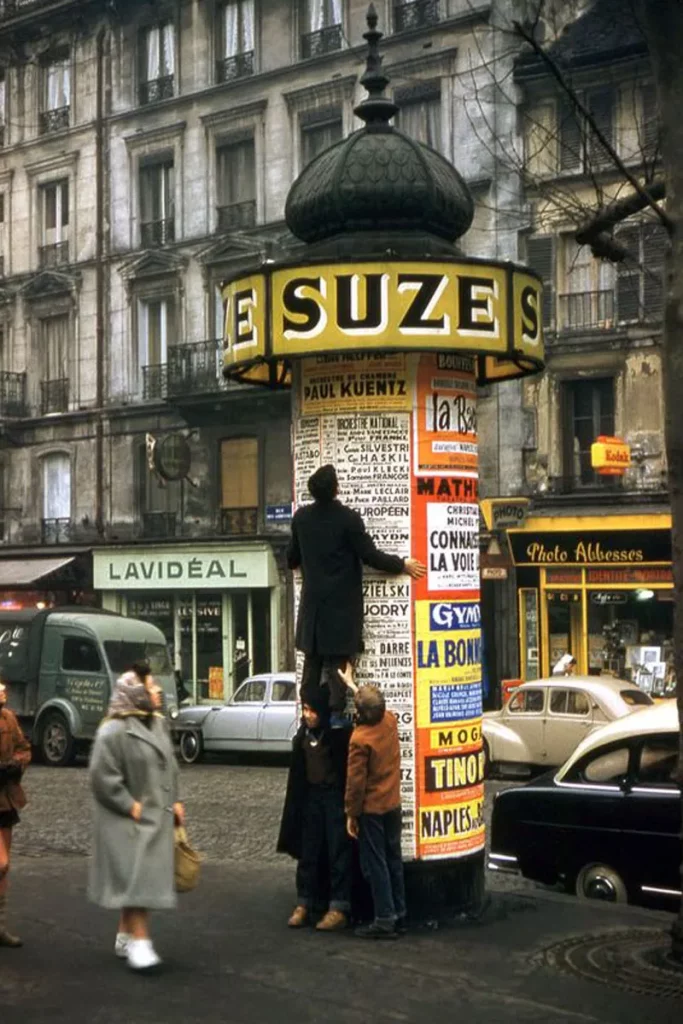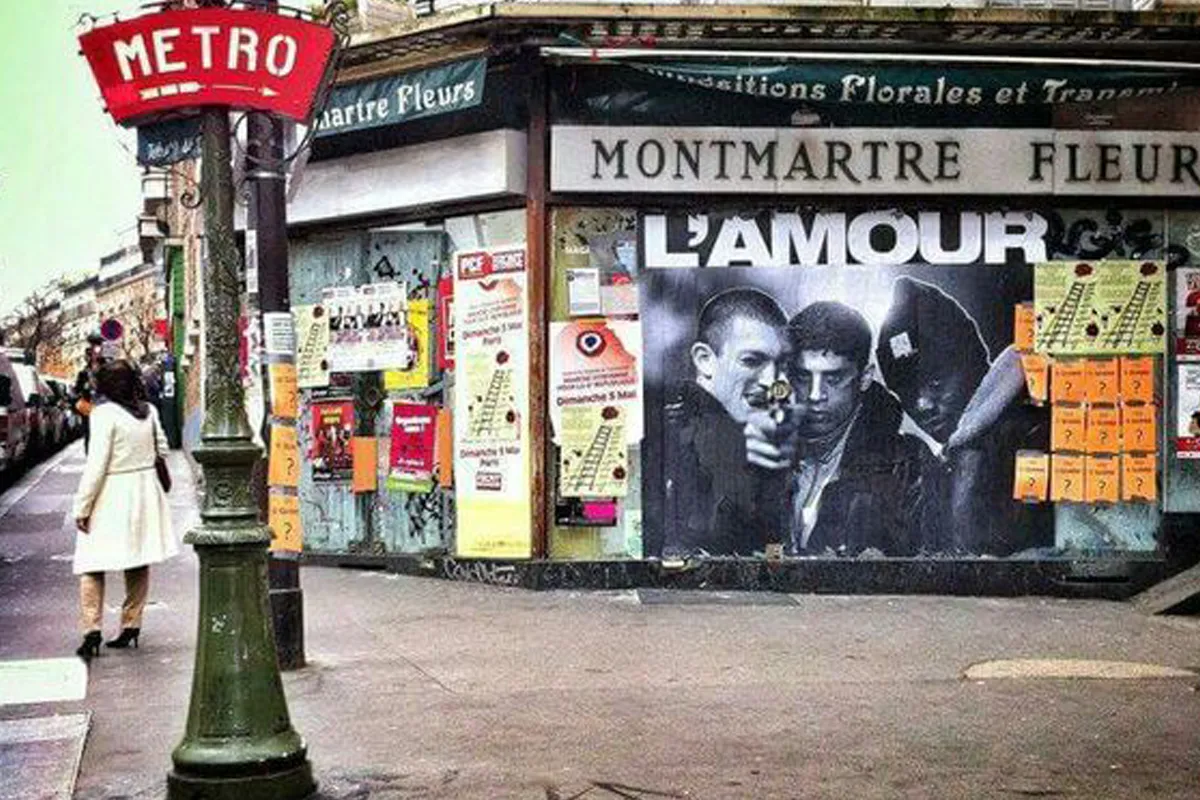From Haussmann’s 1857 vision to modern challenges, Parisian newsstands evolve. Urban icons adapt, balancing tradition and digital era demands, embracing change
The history of Parisian newsagents
It was on August 15, 1857, that the Parisian landscape was equipped with its first newsagents. The idea was the brainchild of Baron Haussmann, the man behind the reconstruction and reorganization of the French capital between 1853 and 1870. Initially located on the Grands Boulevards, the first newsagents were designed by architect Gabriel Davioud, creator of the Théâtre du Châtelet, among other buildings.
Prior to these specially designed press sales outlets, peddlers sold newspapers by hand, in front of taverns or in the capital’s parks. As newspapers proliferated, vendors were obliged to sell them on trestles in the street. The purpose of newsstands was to house press vendors, a means of expression still limited in the days of Napoleon the Third. Within two years, some fifty kiosks were appearing on Parisian streets.
In addition to their informative role for the Parisian population, newsagents were all lit by electricity, providing a sense of security and warming up the streets. The first models designed featured an octagonal column for displaying advertisements. Attached to this was a small stall covered with newspapers and magazines. Parisians came here to get information, read the headlines and buy, but also to chat, debate and meet people. Life grew up around these structures.
The recipe created by Baron Haussmann provides work for women in precarious situations. Newsstands offered stable employment to widows of soldiers and civil servants. They were able to earn an income that enabled them to live off their work as newsagents.
One of the most iconic Parisian newsstands is located on Boulevard Saint-Germain, right next to Café de Flore. This newsstand has become a significant part of the history of Saint-Germain-des-Près, thanks to its strategic position near the heart of this neighborhood. Over the years, it has played a crucial role, attracting attention from artists and philosophers who frequented the café. This particular newsstand holds a unique story, serving as a regular stop for these influential figures to purchase their newspapers. It stands as a tangible link connecting the intellectual legacy of the café to the broader cultural and social landscape of this renowned Parisian district.
The evolution of design and architecture of Parisian newspaper kiosks
Parisian newsagents have undergone many changes over the centuries. They have evolved from a simple, practical architecture providing a covered, lighted space for newsagents, to a structure offering more and more comfort and space for customers and vendors alike. The first Parisian newsstands designed by Davioud are decorated with festoons and a small dome. The color of the structures is dark green, like many other elements of Parisian street furniture. Morris columns, Wallace fountains and public benches come to mind. The design remains relatively similar through the ages. Even today, original kiosks can be found, despite their decreasing numbers. Their layout may differ, offering more or less space, and a different shape, while retaining the original color and decorative elements.
It was after the Second World War that the Parisian kiosk became a real advertising space. With the onset of the «Trentes Glorieuses», a period of great economic development in France, the advertising industry was booming, as was the population’s desire to consume. Parisian kiosks became showcases for the new Western consumerism. Some kiosks were even created by alcohol or cigarette brands to provide permanent, unique advertising.
In 2017, the Parisian newsstand was completely redesigned. Designer Matali Crasset was given the opportunity to rework and rebuild this monument to Parisian urban architecture. The new look offers more space and comfort for passers-by and sales clerks alike. The design is more streamlined, advertising space is reduced by 20%, as is electricity consumption, which is cut by 54% thanks to the LED lighting system. The new Parisian newsstands have also been designed to facilitate the work of kiosk operators. They offer more storage space, and an enclosed area where the salesperson can sit in warmth. There are also individual toilets on each kiosk, which was not the case until 2017, forcing kiosk staff to leave their shelters to use the restrooms in nearby shops or restaurants.
The closing and opening system has been simplified to save staff time. According to testimonials from kiosk operators in Paris, in the past, closing a newsstand could take up to an hour and a half. Today, the business can be closed in just fifteen minutes.
The services offered by newsagents have become more varied over the years, and today’s new layout enables newsagents to offer electronic device recharging facilities for sale to customers. Transport tickets are also on sale, as are refreshments and souvenirs.
All these changes have paid off, with sales rising by 10% following the installation of the new Parisian kiosks between 2017 and 2018.

The cultural and social life around Parisian newsagents
Since their creation, newsagents have brought Parisians together. People from all walks of life, opinions and ages came to catch up on local, political, social and international news. At a time when information could only be found in newspapers, people saw newsagents as an essential place. A social life quickly built up around these structures. Residents knew their local newsagent, a person they saw every day. Because of the high footfall generated by the kiosks, street artists used to perform near these gathering points.
At the beginning of the 20th century, the French became fond of the written press. Paris had four dailies that dominated the market in 1914: Le Matin, Albert Londres and Jean Dupuy’s Le Petit Parisien, Le Petit Journal and Le Journal.
In 2009, kiosk operators were facing a crisis in traffic. To help them generate income, the Paris City Council authorized them to expand their business to include the sale of transport tickets, souvenirs, refreshments and other necessities such as umbrellas.
According to some newsagents, newspaper stands are increasingly deserted. Despite attempts by the public authorities, customers are showing less and less interest in the printed press.
«Our only regular customers are rather elderly people who live in the neighborhood and have been coming to get their newspaper for years. It’s always a pleasure to see them, but we’d like to have more young people, more new faces browsing through our newspapers».
Printed Media in the Digital Age
Since the advent and democratization of digital media such as television or radio as well as social networks more recently, information crosses other barriers, those of digital. More available, impactful and personalized, these are some terms that readers use to justify this preference of the digital press.
Several reasons can justify the abandonment of the paper press.
According to booksellers and newspaper dealers in Paris, readers have systematically lost the need to leave their homes and go to a press point or a bookstore to get information.
«Since the pandemic, people have learned to love the comfort of home again. People want to spend more time at home, they want to work remotely, some leave less and less. They no longer need to leave home because now everything can be available from home: work, errands, shopping and of course, information» explains Antoine Berriche, owner of Librairie Berriche in Paris.
Interest in print media appears to be waning, with social media increasingly capturing readers’ attention more directly. In today’s landscape, all social platforms provide 24/7, unrestricted access to information. Readers seek content that aligns with their specific interests and convictions, a convenience facilitated by following newspapers or magazines of interest through their social media accounts, eliminating the need to locate a nearby newsstand.
According to insights from professionals in the print media industry, there’s a perception that social media cannot maintain the same editorial quality as traditional newspapers. They argue that platforms like Instagram, for instance, prioritize attention-grabbing content at the expense of detail. This, they suggest, may lead to the dissemination of inaccurate or false information due to the unrestricted nature of expression by non-professionals.
As the industry continues to adapt, the coexistence of print and digital media showcases a diverse array of choices for consumers seeking news, each with its unique strengths and considerations.
Adapting to Change: Challenges Faced by Print Media in the Digital Era
In the current digital landscape, the traditional print media industry confronts several challenges that extend beyond editorial concerns. A notable issue is the declining foot traffic observed in both libraries and newsstands due to changing consumer preferences. As individuals increasingly turn to online platforms for news consumption, the physical sale of newspapers has diminished, affecting newsagents who now contend with reduced customer engagement. Similarly, newsstands, once prominent fixtures in urban areas, are grappling with shifts in consumer behavior.
Libraries, traditionally regarded as repositories of knowledge, are also grappling with challenges. The convenience of accessing information online has led to a decrease in physical library visits. This poses a challenge for library owners who must consider strategies to redefine these spaces, offering more than just books to maintain relevance.
According to various print media stores visited, businesses are attempting to attract more customers by organizing physical events. These events include book signings, presentations, seminars, debates, or the sale of limited and more diverse editions. Some stores are focusing on offering less mainstream options that are harder to find, such as independent press, which caters to a niche audience.
Another solution adopted by written press platforms is the subscription system, enabling readers to receive their newspapers or magazines directly at home or on their electronic devices such as tablets or phones. Most often, these subscriptions offer exclusive content and other benefits to the readers.
It is crucial to recognize that the coexistence of print and digital media is not a win-lose game. While digital platforms provide immediacy and convenience, print media offers a tangible and often more in-depth reading experience. Navigating this evolving landscape demands a nuanced approach from stakeholders in the print industry. Successful adaptation will require strategies that align with changing consumer preferences while leveraging the unique strengths that print media continues to offer. The future of print media hinges on its ability to innovate and remain valuable in the face of digital dominance.
Parisian Newsstands
Since 1857, Parisian newsstands have become symbols of the French capital due to their rich history. Today, after numerous changes and evolutions, they continue to write Paris’s story, facing the challenges of digital press and social networks. Torn between tradition and modernity.



















